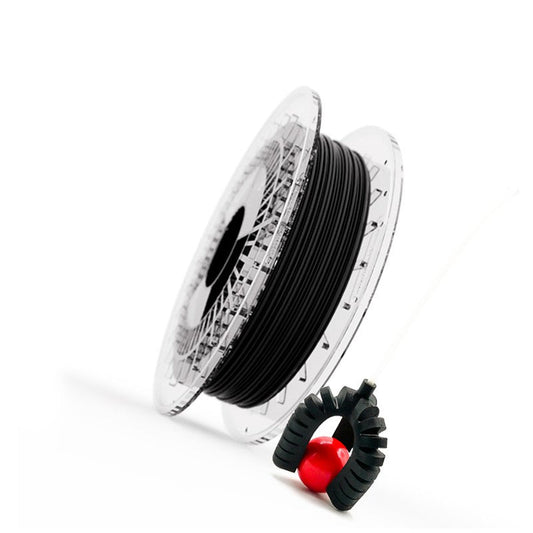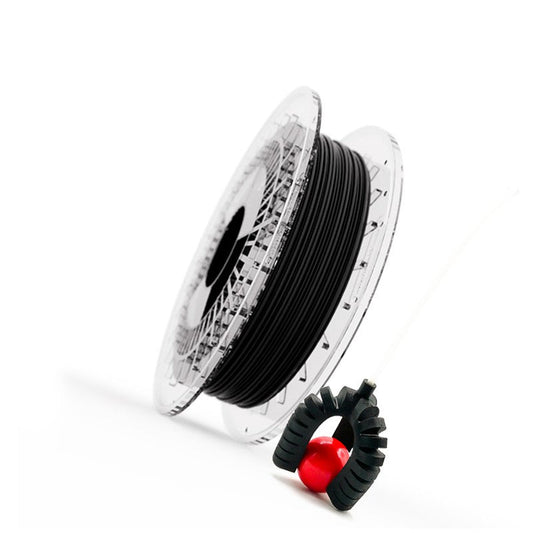RUKA: Ripensare il Design delle Mani Umanoidi con l'Apprendimento
RUKA: Una Mano Robotica Umanoide Alimentata dalla Stampa 3D e da Materiali Flessibili
RUKA è una mano robotica compatta, a basso costo e open source che combina componenti stampati in 3D e controllo basato su apprendimento per ottenere una destrezza simile a quella umana. Con cuscinetti morbidi realizzati in Filaflex Foamy e un design azionato da tendini, RUKA eccelle in teleoperazione, prestazioni di presa e accessibilità, stabilendo un nuovo standard nella robotica accessibile.
Design Centrato sull'Umano: Funzionalità e Accessibilità
La mano RUKA è stata progettata per imitare da vicino la forma e le dimensioni di una mano umana utilizzando componenti commerciali e parti stampate in 3D. I suoi cuscinetti morbidi—realizzati in Filaflex Foamy TPU—migliorano la presa e proteggono dagli impatti. Questi cuscinetti sono essenziali per manipolare oggetti reali in ambienti umani.
In modo impressionante, RUKA può replicare 29 delle 33 prese della tassonomia GRASP, comprese prese di forza e di precisione. Le sue dimensioni antropomorfiche consentono inoltre una perfetta integrazione con guanti di motion capture come MANUS.

Materiali Flessibili Incontrano la Potenza Robotica
I componenti morbidi di RUKA—realizzati con Filaflex Foamy—le permettono di afferrare una vasta gamma di oggetti con stabilità e adattabilità. Nei test di forza, RUKA ha ottenuto:
- Forza di presa: 2,74 N
- Carico utile: 6,0 kg
- Forza di slittamento (DIP/PIP): 33,02 N
- Forza di slittamento (MCP): 16,15 N
Questi valori superano altre mani commerciali come LEAP o Allegro, evidenziando il vantaggio prestazionale dell'uso di materiali flessibili stampati in 3D.

Architettura di controllo basata su apprendimento che utilizza i guanti MANUS per prevedere le posizioni dei motori a partire dai dati delle punte delle dita.
Controllo Più Intelligente Tramite Apprendimento
Controllare mani azionate da tendini è complesso. RUKA risolve questo problema utilizzando modelli di apprendimento profondo addestrati con dati raccolti tramite guanti MANUS. Questi modelli mappano le posizioni delle punte delle dita o delle articolazioni ai comandi motore utilizzando reti neurali LSTM.
Questo sistema consente una teleoperazione ad alta frequenza e un’imitazione precisa dei movimenti della mano umana senza sensori articolari interni—riducendo significativamente i costi e la complessità meccanica.
Open Source, Modulabile e Amichevole per i Maker
RUKA è completamente open source: dai file CAD su OnShape al codice di controllo e un modello di simulazione su MuJoCo. La sua costruzione stampata in 3D consente riparazioni rapide e personalizzazione. Il tempo totale di assemblaggio è di circa 7 ore, e la maggior parte delle riparazioni richiede meno di 20 minuti.
Sono disponibili più configurazioni—da una versione leggera da 500$ a una versione ad alta coppia da 1300$. Questo rende RUKA una piattaforma flessibile per maker, ricercatori ed educatori.
Conclusione: Una Mano Robotica Costruita con Flessibilità
RUKA dimostra cosa sia possibile quando materiali flessibili come Filaflex Foamy si combinano con robotica open source e sistemi di controllo intelligenti. Avvicina la destrezza umana—letteralmente—a sviluppatori e ricercatori che desiderano costruire la prossima generazione di interazione umanoide.
Fonte: “RUKA: Rethinking the Design of Humanoid Hands with Learning” di Zorin, Guzey, Yan, Iyer, Kondrich, Bhattasali, Pinto. NYU Robotics. Leggi l'articolo.









